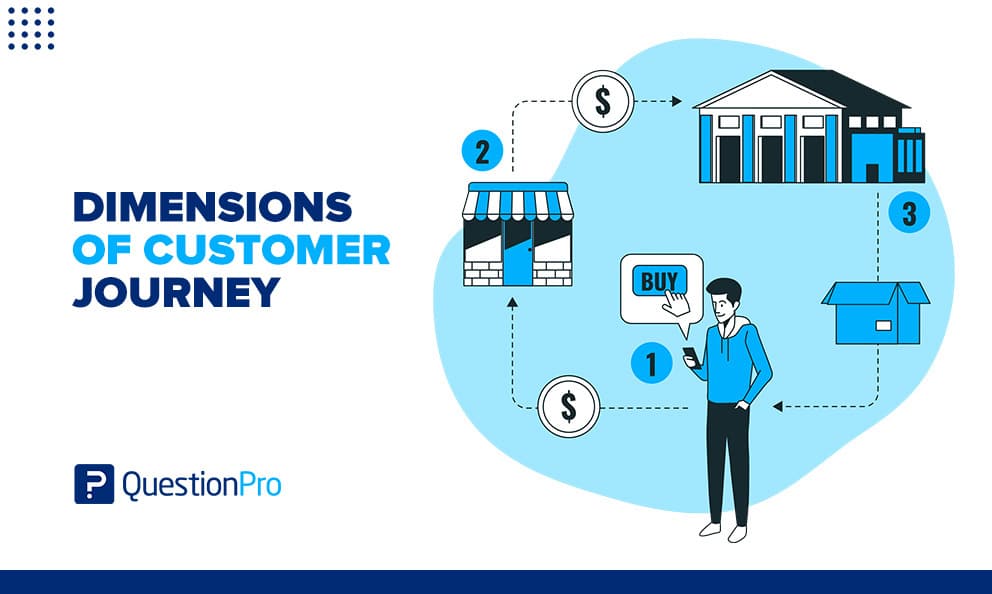 Reading Time: 3 minutes read
Reading Time: 3 minutes read
Today we will learn about customer journey dimensions and some recommendations for the enhancement of the customer journey. In the process of improving customer satisfaction, there is a struggle between what is the Customer Journey and mapping customer touchpoints.
Sometimes people incorrectly interchange both concepts, when in reality they refer to different processes. The process of mapping customer touchpoints is established by the company internally, according to the design it carries out to provide the service or establish communication with its customers.
What are Customer Journey Dimensions?
Customer Journey is the process that the customer experiences in contact with the brand, from their point of view and personal experience.
The difference is abysmal, as a company, we may think that the processes we establish are optimal and cover all cases, but reality tells us that the customer experience is very different.
Understanding the experience that the client goes through in his contact with our brand makes it essential to ask the client himself to get to draw the accumulation of experiences of the interaction.
Therefore, both qualitative and quantitative research is the previous step to illustrating the Customer Journey Map.
LEARN ABOUT: Customer Journey Mapping Tools
The first result of the studies will allow us to create an inventory of touchpoints, classifying all the points that the client crosses throughout their experience through logical groupings that transcend specific individual preferences.
What is really critical is to correctly identify the nature of each customer touchpoint and the phase of the experience in which it takes place.
Once the information is collected and analyzed, we can identify the touchpoints as critical, complementary, and superfluous.
The 4 Customer Journey Dimensions
The research to discover the journey must include five dimensions that make up the customer experience map.
These dimensions are the objective, the journey model, the qualitative vision, the quantitative information, and the conclusions and recommendations.
1. The objective
The goal is to define the different types of people or segments of people who make differentiated routes. This way we will have the variability of routes, touchpoints, and experiences of our clients with their own characteristics and experiences.
In each journey and for each specific point of contact, it is analyzed if they fit with our principles or whether if they satisfy the needs of the different types of clients or not.
The key is to contrast the journey with different criteria, segments and value propositions so that we can prototype various scenarios in which to operate.
2. The path or route model
The journey model is the drawing of the customer journey. The interesting part is to extract a model that is manageable and that integrates the largest number of types of customers according to their journey.
The model created with the information is a diagram that includes relevant data that answers to questions such as how many people prioritize one channel over another? What part of the experience is failing? What part of the experience has not been considered and is essential?
If you like reading about customer journey dimensions, you might find it interesting to learn about how to create a customer journey canvas
3. Qualitative vision
The qualitative vision nurtures the customer’s “do, think, feel” journey. The “doing” is the route model; the “thinking”, are the thoughts in the contact, can I get there from another place? Will it work? Can I use this? , and the “feel”, attend to the answers that express satisfaction, frustration, sadness, confusion…
In the qualitative data, there is the basis to understand the importance and value that a certain point of contact has for our clients.
4. Quantitative information
Another dimension of the customer journey is quantitative information, which is essential because it incorporates the data obtained through surveys, web analytics prescriptions, etc.
In some cases, quantitative research can be used to emphasize specific parts of the customer journey (only 250% meet this touchpoint, while 60% meet this other touchpoint).
The available data can be illustrated in very original and graphic visuals.
Conclusions about Customer Journey Dimensions
Understanding the dimensions of a customer journey enables a business to identify opportunities, points of friction, and calls to action in each interaction of a stage.
It is not a mere illustration of the experiences in different channels. Its goal is to coordinate the set of customer touchpoints that happen over time.
If you want the map to be really useful, it must be self-explanatory, it should be easily understood by each of the company’s departments without the need to be explained by the department that has prepared it, and it must lead to the action of strategies and improvements and not be an end in itself.
CJM is an essential tool to develop in your business, to manage and improve the experience of your customers.
Now that you know the dimensions of the customer journey, when do we start the journey?
At QuestionPro CX we offer you the best tools to monitor the customer journey in your organization. Contact us! We would love to team up with you to help you achieve better customer experiences!




















